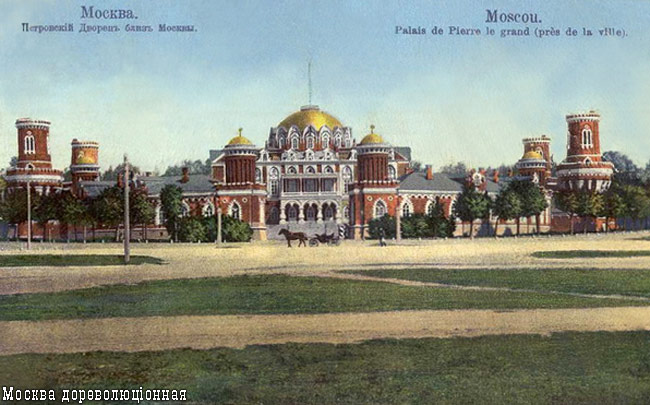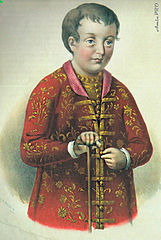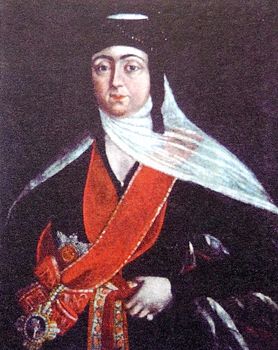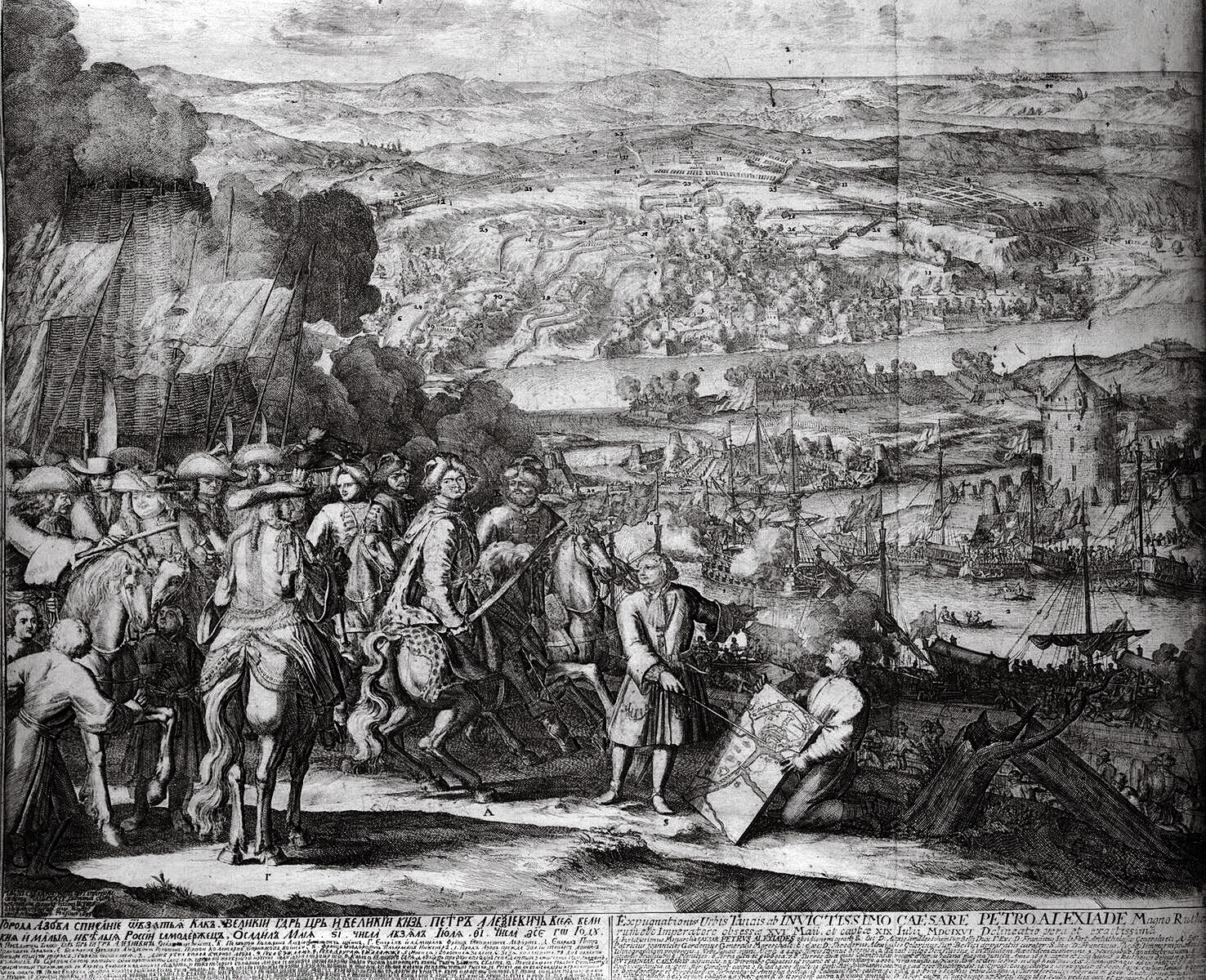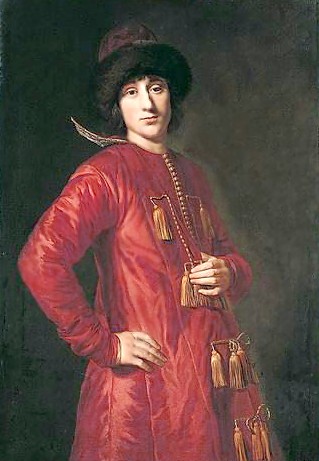Chapter XXIX: To Gamble on Thrones
In Russia the dawn of 1688 was full of great changes. In Moscow two long awaited changes to the Court and Government are finally completed. The first is the publishing of the Velvet Book, a collection of genealogies for the Russian nobility, including the complete genealogies of the 30 noblest aristocratic families, who rank high enough to marry younger daughters of the Royal family. The second is the long-awaited court ranks system, boasting 34 ranks of “service and superiority of boyars, okolnichyis and Duma officials”. As the current version is only a first draft, it is to be improved upon as the new government develops:
1. Boyar, chairman of the Boyar Duma (Domestic in Greek). Head of all judges of Moscow. Golytzine was aiming for the office, but it was given to a neutral person, though universally respected one – old Prince Mikhail Alegukovich Tcherkassky. He was to preside over the Chamber of Judgment (“Raspravnaya Palata”) in the absence of the Tsar. Golytzine was left with the Chancellor position, with no chances for a Supreme Court seat.
2. Boyar, Supreme Battle master (Sebastokrator). The position was first intended for Grigory Romodanovsky, when the Table of Ranks was first drafted, but with the untimely death of elderly Prince in 1687 Fyodor Romodanovsky, the unofficial First Prince of the Blood, has became the first Sebastokrator of Russia.
3. Boyar, Viceroy of Vladimir (Vasily Golytzine managed to secure this important office, as this governorship connected with the start of his political career – his first serious office as a Boyar, back in the mid-1670s, was the supreme judge of Vladimir.)
4. Boyar, military governor of Sevsk (this position, “key to the Ukraine” was surprisingly given not to a Russian noble but to Scotsman Patrick Gordon, but considering he already held the governorship of Sevsk under Alexis I, such rapid rise in ranks was not unexpected)
5. Boyar, Viceroy of Novgorod (the position was given to the Tsar’s brother in law Pyotr Apraxin)
Positions 6-29 include the governors of other Russian provinces in order of priority. One that will prove to be the most important is No.17 , the Viceroy of Arkhangelsk, given to another of the Tsar’s brothers-in-law – Fyodor Apraxin, who will later be remembered as the “godfather” of the Russian Navy.
30. Keeper of the Royal Wines (Speter Kuropolat). The office, which was one of the most important in the Royal Household, was given to the favorite of the Tsar, Ivan Yazykov the man behind the marriage of Feodor III to Marfa Apraxina, who also managed the Kremlin Armory.
31. Chief Keeper of Royal Cups.
32. Okolnichy (intermediate rank between stolnyk and boyar)
33. Postelnichy (First Gentleman of Bedchamber to the Tsar, keeper of Tsar’s clothes and private purse) – the position was given to young Andrei Apraxin, a brother-in-law to the Tsar, who was not considered smart enough for anything higher.
34. Other Duma officials (stolnyk etc).
For the Court the other important achievement was the completion of Izmailovo Palace in March. The Palace, while rather small by European standards (it was half the size of Kolomenskoye Palace), was nevertheless the first Russian stone palace boasting cour d’honneur. In honor of the victory at Ochakov, Tsar Feodor commissioned a fountain-sculpture , to be place in the center of the cour d’honneur, depicting Saint George pinning down the dragon. The mouth and wounds of the dragon, symbolizing the Crimean Khanate were to sprout water. This monumental work of art will soon become unofficial patron of Izmailovo Palace, just like Apollo for Versailles, Hercules for Het Loo and Neptune for Winchester. The throne room (which also hosted the Boyar Duma meetings, replacing the room in Barbican Tower of Izmailovo, used by Tsar Alexis I) was located on the uppermost floor of the building based on the time-honored traditions of Russian palace architecture.
New Izmailovo Palace: a masterpiece of Muscovite Baroque
The new palace soon saw its first Royal Birth. On March 29 Tsesarevich Simeon Feodorovich was born, with both mother and child reportedly in good health. The Tsesarevich is named for the the favored saint of the Tsar, with Patriarch Ioakim and Tsarevna Tatiana Mikhailovna, the favorite aunt of the Tsar, as godparents for the young child. Though many tongues wagged over the name, considering that the last Russian Tsarevich to bare the name Simeon (Tsar’s late brother) died at the age of four, with most believing that “Abbakum’s curse” continues to hand over the House of Romanov, Feodor III was on top of the world. Wine and beer flowed freely on the streets of Moscow, convicts in prisons were pardoned, many large donations were made to the Simonov and Donskoy Monastery, and the capital erupted into celebrations.
A new hope for Russia?: Tsesarevich Simeon Feodorovich on the eve of his third year
A unique performance was held at the Kremlin to celebrate the birth of the heir, with the old Comedy Building used for the first time since the reign of Alexis I. While the Tsar disliked the comedies on principle (though tolerating the plays of his half-sister and ward Tsarevna Natalya, who even staged a translated play of Moliere in her chambers, with her ladies and servants being actors and herself as director), he was a big fan of music, and commissioned the oratorio on the story of Saint Josaphat to celebrate the birth of a heir to the throne. The “Story of Barlaam and Josaphat” with the verse written by Tsar’s old tutor Simeon of Polotsk was performed in front of the Royal Family (including the ladies), Government Ministers and the important officials of the court.
The birth closely coincided with the news from Poland, where the Tsar’s sister Sophia also became a proud mother on February 16. The child was a girl – though quite a large one, sure to take after her mother in stature, christened Maria-Karolina – Maria after the first wife of Jan III, Sophia’s mother and the Virgin Mary and Karolina after her half-sister-in-law. While Sophia hoped for a boy, the news of a girl are comforting for the court at the Kremlin, as it means that the Poles won't have a potential claimant for the Russian throne. The private letter from the Tsar’s dear elder sister also concerns Crown Princess Ludwika-Karolina. The young Princess is pregnant, with the due date believed to be in the middle of summer (“around the day of St. John the Baptist” as Sophia put it in the letter).
Another important event in the Russian court was the arrival of exiles from Georgia. King Archil of Imeriti, who was deposed from his throne by the vile Ottomans, had already arrived in Moscow in 1687 to rejoin his wife Ketevan of Kakheti and children – Princess Darejan and Princes Aleksandre, Mamuka and Davit. The deposed Royals have been in Russia since 1684, enjoying the honors of foreign royalty.(Aleksandre studying in Slavic-Greek-Latin Academy alongside Tsarevich Peter and being his friend). The King, coming from the Bagrationi dynasty,was crowned at Kutaisi in 1661 after the deposal of the pro-Ottoman Bagrat V of Imeriti. The crowning nearly sparked the war between the Ottoman Empire and Persia, as it was seen as installing a Persian puppet in an Ottoman-controlled region. After being deposed in 1663, he ruled in Kakheti from 1665 till 1675, and gained the reputation of an enlightened ruler (writing poetry and political treatises). Despite being forced to nominally convert into Islam, he raised his children Orthodox. After reclaiming and once again losing his kingdom, Archil permanently moved to Russia. Now with his host country at war with the Turks, King Archil (or Shah-Nazar-Khan, as he was known in Persia) hoped to find aid in this Northern power.
However, any aid depended on troops, and between most of the army being engaged in the Crimea and the Siberian troops being busy on Amur, Russia simply didn’t have forces to spare for an invasion of the Caucasus. As for Persia, as Ivan Yazykov put it “If their drunkard of a Shah even cared about anything other than keg of wine, we’d have something on our hands”, and Grand Visier Shaykh' Ali Khan, who held the real power in Persia, was still wary of a full scale alliance with Russia due to the policy of limiting the rights of the Muslim gentry in the Volga region.
In order to strengthen his chances, King Archil has been hopping to arrange a marriage between his daughter Princess Darejan (or Darya, as she’s known at Russian court) and the Tsarevich Peter, but Feodor III desires a grander, European match for his half-brother and potential heir. However, Darejan (“a princess with the heart of a nun” who has befriended the similarly minded sister of the Tsar, Tsarevna Feodosia, who is preparing to take the veil) took a liking (or a pity) to Tsarevich Ivan, whom she met on a pilgrimage. Despite her feelings being more pity towards a severely myopic autistic young man than love, her father quickly sees the advantages of a marriage between his daughter and a Russian Tsarevich.
Thankfully for the Georgian King, Tsar Feodor was unopposed to the proposed match. First, it gave Russia a potential route with which to influence the Caucasus, and second, a match between a Romanov prince and a foreign Princess of the ancient House of Bagrationi, though an exiled one, raised the prestige of the dynasty. Also it provided a feeling of security for the succession, as while Ivan was excluded from the direct line due to his disability, the same limitations did not extend to his children, and thus, even if Simeon takes after his late uncle and Peter dies on the Azov campaign, the succession line will be secure. And moreover, if Ivan and Darejan manage to produce a daughter she can take the place of her cousin Tsarevna Theodosia Feodorovna in the Galytzine betrothal, as a granddaughter of a Tsar is of a more appropriate rank for a mere Gedimind.
In fact, the wedding was preceded by quarrel between Tsar and Chancellor – Feodor III, fast approaching his thirtieth year, no longer viewed Galytzine in the same way he did in earlier years. As a teenager, the Tsar, being 20 years junior to his Chancellor, saw an experienced adult, who was well-read, shared his progressive views and was a positive contrast to Feodor’s greedy uncle. But now, as the Tsar’s dynastic ambitions begin to flower, his opinion of Galytzine has began to change, For instance, the townhouse Galytzine built for himself near the Kremlin was by far the largest noble residence in Moscow, with the “corrupt criminal” Miloslavsky’s house looking like a barn in comparison, and his idea of a marriage between a Tsarevna and his grandson was irritating and reminded those knowledgeable in European affairs of the marriage between the Duke of York and Anne Hyde. So, while the idea of a union between the Galitzines and the Romanovs has not completely died, it is now a distant dream. Tsarevna Theodosia is tentatively betrothed to Prince Mamuka of Imeriti, with the possibility of being transferred to the eventual eldest son of Prince Aleksandre of Imeriti.
Before the formal marriage ceremony is held at Moscow's Dormition Cathedral, Ivan is created Prince of Uglich, the traditional title and appanage of second sons in the late Rurikid dynasty. Though the reborn Principality is not a full-scale fief of old, with more in common with the British Peerage, this order was nothing new, as two previous Princes of Uglich were a minor (Dmitry the Martyr) and a foreigner (Gustav of Sweden) respectively, so a principality formally “ruled” by a disabled man was not surprising.The April 25th wedding of the new Prince and Princess of Uglich was a modest affair, with no luxurious celebrations, as the country was spending large sums on wars. On the same day Prince Aleksandre of Imeriti married Feodosia Miloslavskaya, the only daughter and heiress of disgraced Ivan Miloslavsky, and thus gained the vast majority of the Miloslavsky estates – the Miloslavsky residence in Vsesvyatskoye quickly became known as “Georgian House” or Gruzinskiye Palaty soon after the wedding.
Darejan of Imeritia, Princess of Uglich, in her later years
On May 13th, once it became clear that the Tsesarevich will live, Tsarevich Peter, with selected members of his military household, left Moscow for Voronezh to take command of the upcoming Crimean/Azov campaign, while the troops of Dolgorukov and Sheremetev hold onto Ochakov. The force included the crème de la crème of the Russian army, the hussar “Archangels” regiment, the personal guard of the Tsar, organized along Polish lines and commanded by young Aleksandre of Imeriti. The entire army amounted to 70,000 men ,commanded de-facto by Gordon and Fyodor Romodanovsky themselves, though more than half come from the Samara defense line, themselves replaced along the line by new soldier-serfs, able to do so thanks to a decree that grants freedom to any serf who joins the army.The only saving graces for this poorly trained force of 50,000 was the fact that the Tatars also suffered severe losses in the 1687 campaign, and defending fortresses is much easier for new recruits then fighting in battle. Thanks to the disastrous campaign of the previous year, the Tatars have been forced to resort to small skirmishes, trying to harass the Russian supply lines. This has turned the territory between Novobogoroditsk and Perekop into a no man’s land, with neither side willing or able to advance past their fortifications.
Said supply lines heavily depend on the new ruler of the Ukranian Hetmanate, elected in February, Mazepa. While Galytzine was pleased with the new Hetman and sent gifts in honor of his election on behalf of the Tsar, some in Moscow are less then impressed. Fyodor Romodanovsky openly called the new Hetman a “whore”, reminding all who will listen of how he once worked with pro-Muslim Hetman Doroshenko and was even involved in the slave trade. However, while Mazepa has a reputation of a fair-weather prince, politicians in Moscow hope that he’ll remain obedient to his new masters, for if he again switches sides there is a general fear that the Turks will regain the initiative. In fact, the only thing saving Ochakov from a Turkish assault, is the unimportance of the Dniepr river compered to defending the islands of the Aegean and Istanbul itself from the League. This was a true saving grace for the fortress, as its defense has fallen almost entirely on the shoulders of the Cossacks.
On May 25 the river fleet, made up 2 galeases, several dozen baidaks and numerous small galleys left Voronezh heading down the Don, with the objective of blockading the estuary of the River. Gordon’s plan, requiring extensive use of artillery, relies heavily on lessons learned by various European navies. In the Azov campaign this strategy was used on a river for the first time. The main body under Nepluev, mostly mostly made up of Don Cossacks, left Voronezh at the end of April to start the assault of the fortress from land. The troops (almost 40,000 from total 70,000, the rest being elite troops accompanying the Tsarevich) had the minimal amount of field artillery necessary for their task, harassing the enemy troops and diverting their attention towards the land walls.
Heavy artillery for bombardment of the fortress was carried on barges accompanying the fleet, while the batteries placed down the river bombard the city and its harbor. While the Tatars are distracted at Novobogoroditsk, the army of Nepluev encounters only token resistance, for the fores arrayed against him are little more then peasant militias. A skirmish occurred on June 1st, with the main army, headed by Tsarevich Peter arriving on June 15th.After the artillery was unloaded from the barges, and the fleet (having captured some Ottoman cargo ships) was positioned for bombardment, the barges that carried the artillery are sunk in the Don, to block the river fairway against Ottoman reinforcements. By Gordon's logic,the barges will be of no use after the city is taken, and if the Ottomans break the siege the clumsy barges would be easy targets anyways.
The heavy artillery bombardment lasted for over a month, with the garrison capitulating on July 30th. While this was celebrated as a glorious triumph for the Russian army in general and Tsarevich Peter in particular, the reality was more gloom. Azov, while important for land communications between the Turks Caucasus holdings and the Crimean peninsula, was a relative backwater which lacked a decent harbor, requiring the construction of another port on cape Taygan for this purpose. As the Azov Sea is shallow with very low salt content, shipbuilding had to rely on traditional ships such as galleys and galeases, as European ships-of-the-line tend to have a very low service life in such waters. So while Russia was in nominal control of a sea, it was but a small step up from river fleets, considering that shipbuilding at Ochakov depended heavily on purchased supplies from the Hetmanate and Sloboda Ukraine.
Trial by fire: Tsarevich Peter at the siege of Azov
Meanwhile, across the borders in the Commonwealth, the situation is quite unpleasant. In fact, Jan III was nearly broke, becoming the butt of European jokes because his Moldavian war is financed by three women – his wife Sophia, daughter-in-law Ludwika Karolina and niece Teofila Ludwika Lubomirska, the heiress of the Ostrogski Ordination. Because the Sejm refuses to raise nex wartime taxes or to vote supplies for the army,the King is forced to with make due with his own overstretched resources.
Jan III, after Moldavian fiasco of the previous year, spent much of 1688 within the borders of the Commonwealth dealing with the fallout from his from previous campaign while trying to gain support for a new one. Meanwhile,an Ottoman army, 150,000 men strong, was reportedly preparing to swarm Moldova and the Belgorod Horde lands, with the new or rather returning Prince of Moldavia, accompanying them. Dumitraşcu Cantacuzino, a Greek and hated by the majority of the Moldavians, was the reigning Prince before old Cantemir, who allowed the country be pillaged by the Turks and inflicted crippling taxes upon his people– under his rule there were even cases of cannibalism in some provinces. The Pro-Polish faction of the Moldavian nobility, led by Metropolitan Dosoftei and the renowned writer and politician Miron Costin quickly started a counter campaign, known by most as "better a Pole than a cannibal". Finally, after half a year of intrigues, both political and militarily, the terms that will allow Aleksander Benedict to become Prince of Moldavia are at last agreed upon. The boy is to be smuggled into Iaşi and convert publicly in front of the Moldavian diet. Only then will the ascension of a Polish Prince be possible, removing fears of a Jesuit reign of terror.
As Jan III receives the terms, the mood is tense. While the promise for a dispensation for the young Sobieski's conversion was given long ago, the document has yet to be produced, as until now there were hopes that the Moldavians would be satisfied with a Greek Catholic ruler. By this point the King's reputation as the of savior of Christendom has been exhausted on two previous dispensations for Orthodox and Calvinist marriages. After much negotiation between Warsaw and Rome a compromise was reached: in exchange for Aleksande's dispensation Theresa Kunegunda Sobieska is to marry a Prince of His Holiness's choice.
The agreement ties the hands of the King, as it means that he has lost control of who his daughter will marry. The list of potential grooms is headed by the French Comte de Montargis, originally championed by Jan III's late wife Maria-Kasimira, and the grandnephew of a French King. The Comte would be a great prize for the rulers of an elective monarchy. Another prospective groom is Hereditary Prince Leopold of Lorraine, a nephew of the Emperor. Shortly after the battle of Vienna, there were also plans to betroth Theresa Kunegunde and Archduke-King Joseph, but after a row between the Emperor and his Polish ally, this ideal match vanished and has been unlikely to return to the table. In August the Pope names informs Jan III of his choice – Andrea Doria, Hereditary Prince and heir of Tripolitania. While not as glamorous as the Comte de Montargis and the King of Hungary, its still a good match, creating new bonds between old and new. Plus it negated Polish fears that their Princess would be forced to marry one of the Pope's grandnephews.
The birth of a child to the Crown Princess on July 14th did not cheer up its grandfather, as the baby was a girl, christened Anna-Maria, and not the needed male heir. In August Andrea Doria and Theresa Kunegunda are formally betrothed,allowing the daring Polish plan to finally begin. Aleksander agreed with the plan – though reluctantly, and not before spending two nights praying at the grave of his mother. Smuggling the Prince to the Moldavian capital in time for the diet, already discussing the deposition of Prince Cantemir is a difficult task, as the Poles only had control the northernmost regions of the country, and the roads to Iaşi are patrolled by Ottoman loyalists.
However the party of Miron Costin and Antioch Cantemir are confident of their success. Surprisingly, the Swedish Count Palatine Gustav-Leopold of Palatinate-Kleeburg ( accompanying his elder brother on campaign) volunteered to act as commander of the Prince's bodyguards. While such a daring plan will eventually inspire dozens of novels, in actuality the journey from Câmpulung to Iaşi was quiet easy, with only small skirmishes on the way. This is thanks to the lack of knowledge of the Prince's appearance and his disguise as a pageboy to Antioch Cantemir. Of course, that was not the way a future Sovereign should enter his capital, but there was no choice on this matter.
On September 28th , during the Diet's debates on the subject of their ruler, a group of armed men suddenly burst into the meeting, accompanied by the Metropolitan Dosoftei and a young boy. “You wanted a new prince – you will get a new prince”, proclaimed Metropolitan loudly, pointing at Aleksander Sobieski and showing the dispensation for conversion signed by the Pope. Shortly afterwards Aleksander formally abjures his Catholic religion in favor of the Orthodox Church, and is enthroned as Soveriegn Prince of Moldavia that very evening, in the Trei Ierarhi Monastery. However, this daring act leaves public opinion heavily divided: on one hand the fear of being ruled by a Catholic with pro-Jesuit policies was lessened, but on the other hand, this 12-year old boy is very likely to be dependent on his father and tutors for advise on how to rule.
Over the next few weeks the Polish army, until now held up by a stalemate, quickly march into the rest of the country, securing the major fortresses, cities and important roads. With Moldavia now ruled by a Polish Prince and garrisoned by a Polish army, the Turks are forced onto the defensive. While a few fortresses remain in their hands, the vast majority are lost. For the time being, the Ottomans busy themselves by rebuilding and expanding their fortifications in the Principality of Wallachia and the Bulgarian provinces, all the while gearing up to retake their lost vassal state.Though Aleksander Sobieski has been officially enthroned as an Orthodox ruler in Moldavia and Russia closed the “pincers” on the Crimea by taking Azov, the situation has began to deteriorate. By this time the new government in Istanbul is finally taking steps to counter their defeats not only in the Balkans but also in Hungary. Only time will tell if the Turks can finally regain the imitative or if they will yet again suffer at the hands of the Christian forces.
A Prince for a Principality: Aleksander of Moldavia at the age of 17
Meanwhile, other events are taking shape that will soon change the face of Eastern Europe. As Russia celebrated the victory at Azov, the newly appointed viceroy of Arkhangelsk, Fyodor Apraxin, began his tenure as governor of his nation's only major port.
Because much of the foreign military supplies travel through Arkhangelsk, the government in Moscow considers its improvement a major priority.The fishermen and sailors of the White Sea are also a potential source of manpower for the embryonic Russian Navy,the necessity of which became clear after the completion of the “pincers” plan. In order that he might fulfill the dual goals of his government, Apraxin turned to the idea of vocational schools for commoners. Spearheaded by Feodor III, they are designed to minimize the dependence of Russia on foreign specialists, where said foreigners acted as teachers for the children of commoners, who go on to work as apprentices and finally as specialists for their specific fields.The edict creating such schools had been issued in 1683, however up till this point only handful existed, mainly in Moscow and focused on architecture, jewelry making and other skills that have been deemed necessary for the transformation of the capital.The only exception has thus far been the medical school at the Apothecary department, championed by Court physician Laurentius Blumentrost, but even this important institution has only just began to gather students.
Fyodor Apraxin's proposal involves the creation of school for shipbuilders and navigators in Arkhangelsk, naturally wanting to recruit local Pomor children as its first students. While the consent of the Tsar for the school as naturally given, finding proper teachers and educators proves to be a challenge. While British or Dutch specialists would be the best choice, the peoples of both nations are well aware of this and tend to charge astronomical rates for their services. So Apraxin instead turns towards an old neighbor, the Duchy of Courland. A small Duchy, only a few decades ago had it had the third largest Navy in the Baltic, with large wharfs built by the navaly- enthusiastic Duke Jakob Kettler. However, Jakob's successor Frederick Casimir, the complete opposite of his father, sold off the Navy at a discount rate and closed the wharfs to finance his court. Reasonably, Fyodor Apaxin believed that unemployed specialists for his school can be found in Courland, a sentiment the Tsar apparently agrees with, as he is soon given permission to travel to the Baltic Duchy on a diplomatic mission, with the goal of gathering as many naval experts as possible.
Arrivingon September 14th, Apraxin finds the Ducal capital Mitau in the midst of grand celebration. Like his Russian neighbor, the Duke had until now suffered from the lack of a male heir, his only son having died at the tender age of one year.However, this changed on September 3rd, when the Duchess, Sophie-Amalie of Nassau-Siegen, gave birth to twins, christened Karl-Leopold and Christina-Sophie.Thus the Duke, full of joy and fatherly pride, quickly agreed to send all the specialists the Russians needed, in return for a few rich gifts in honor of the birth of his son. With the arrival of the educators and a charter from the Tsar, the Arkhangelsk Navigation School opened its doors on October 25th 1688. As a further gesture of good will, Fyodor Apraxin attended the baptism of Hereditary Prince Karl-Leopold and his sister as the Russian special envoy. However, this will be far from the last time he encounters the future Duke. But for now, the procured naval specialists are obviously more important then the heir of a minor, backwater Duchy.
Arkhangelsk Wharf: The first step for the Russian Merchant Navy
As the year comes in an end, the eastern front remains turbulent and complicated, with both Russia and the Commonwealth making solid gains – both tangible and political – but the ability to hold on to them remains very much in doubt. Only the future will show whether the ambitions of these lions of the east will end in glorious success or end as food for the resurgent grey wolf of the Turks. Whatever the case though, 1689 promises to be an explosive year for all three of this great nations.
